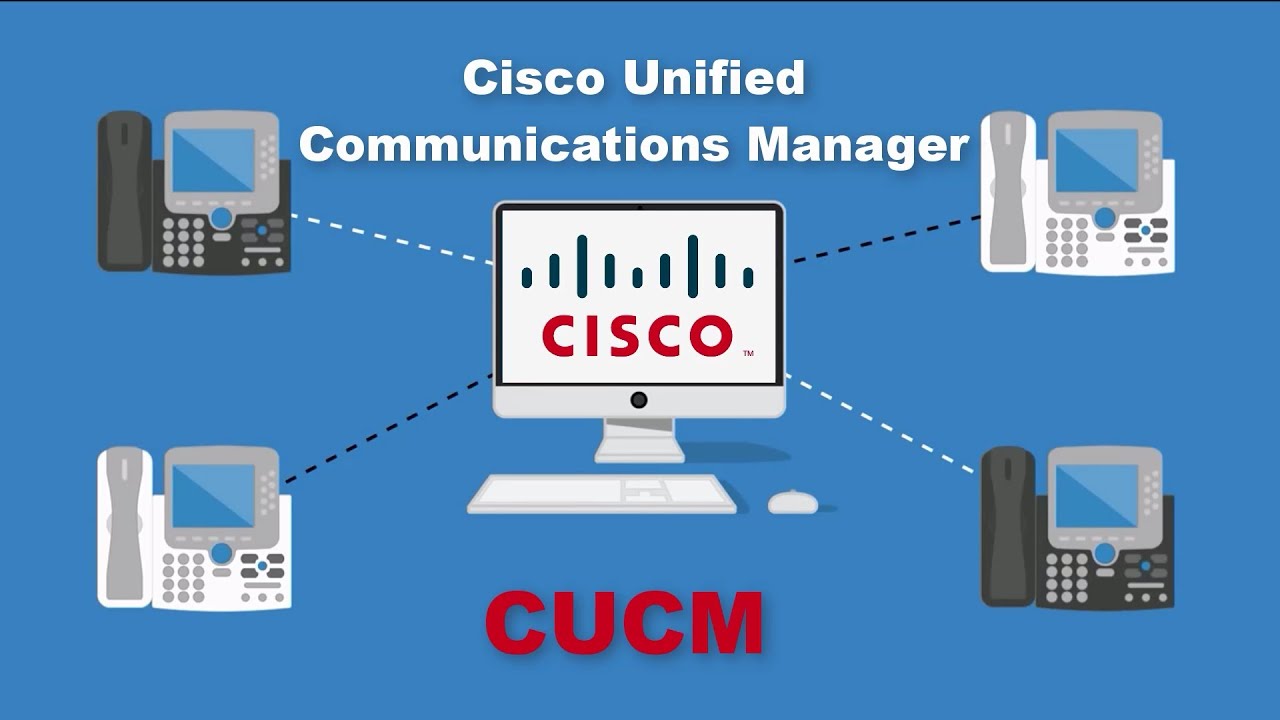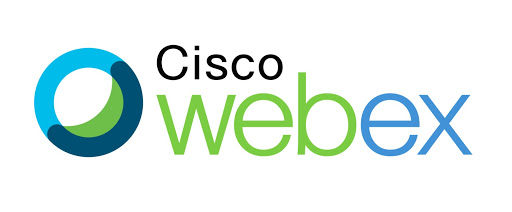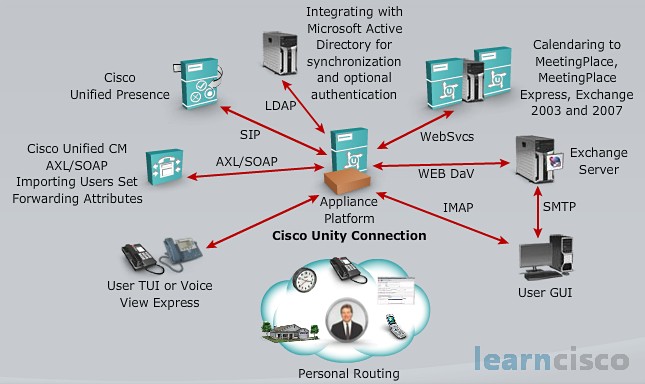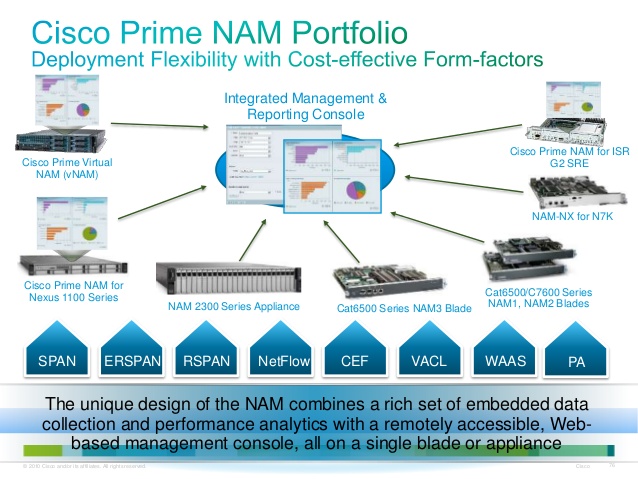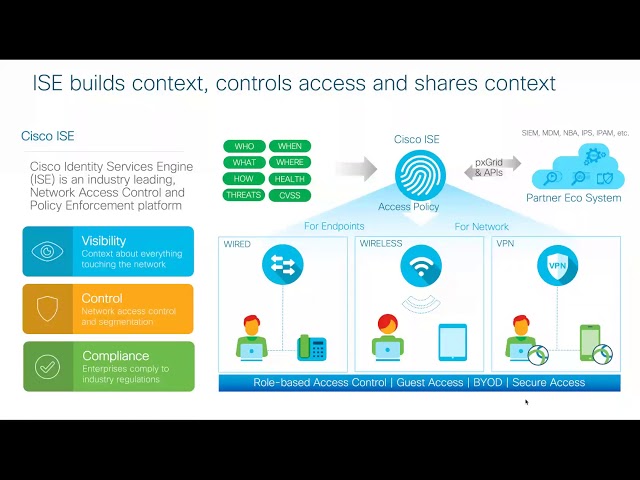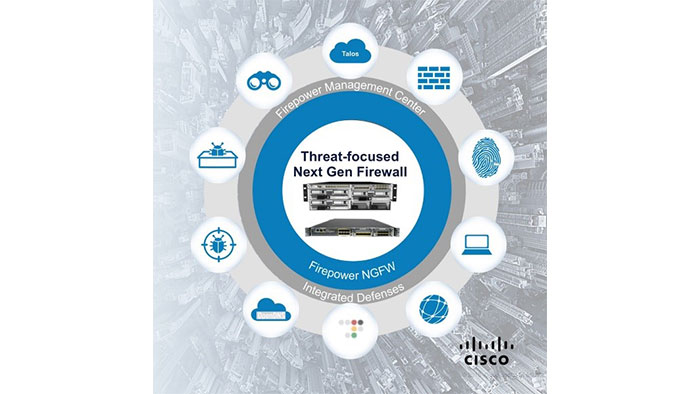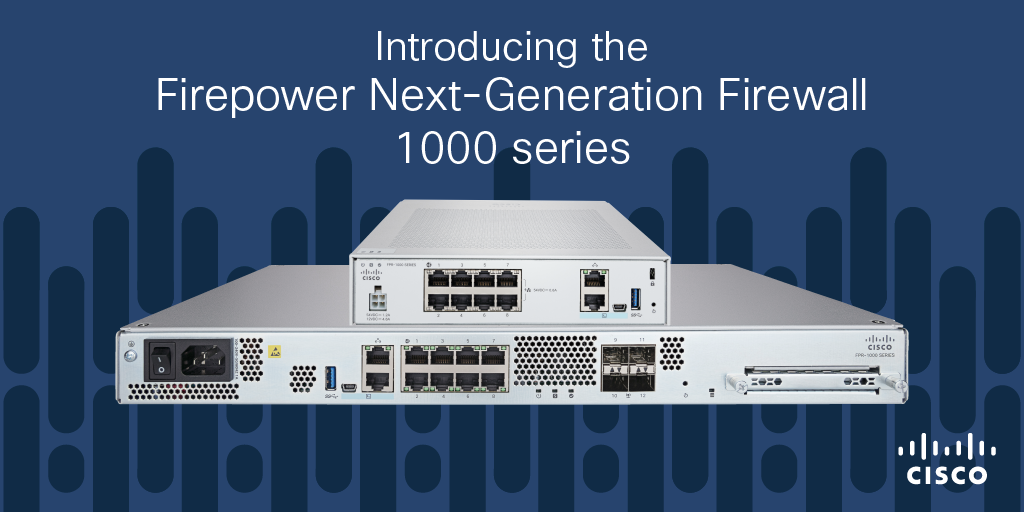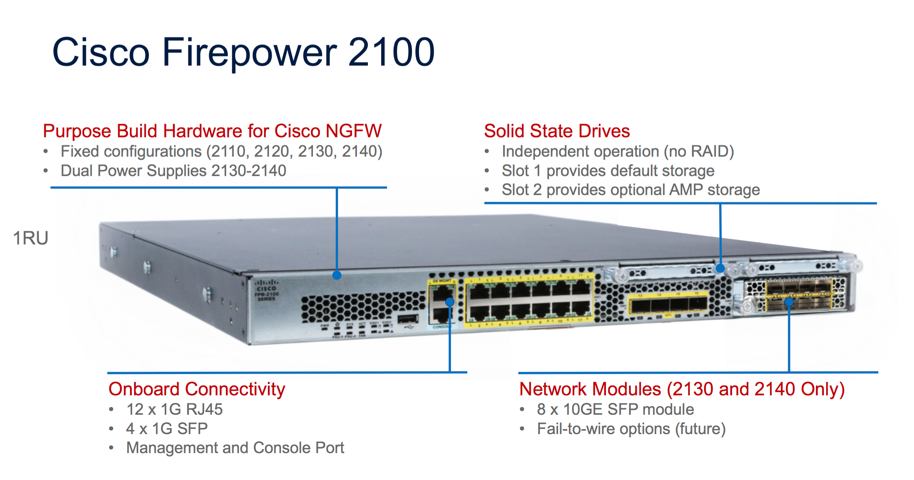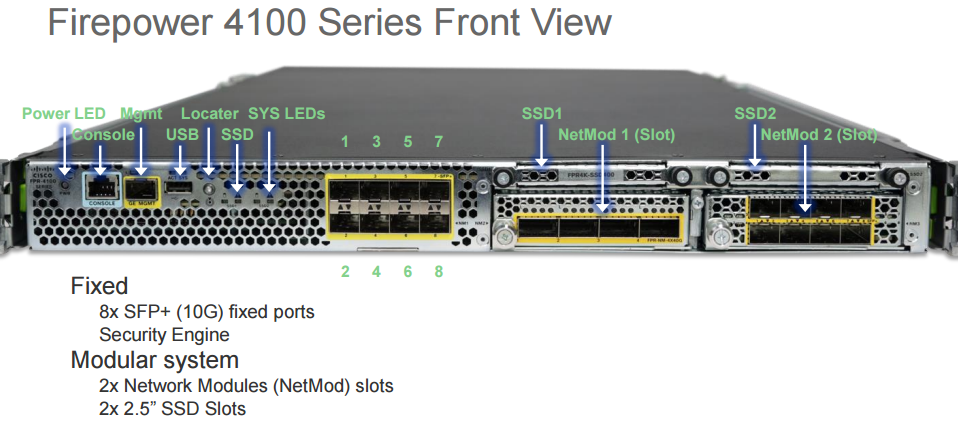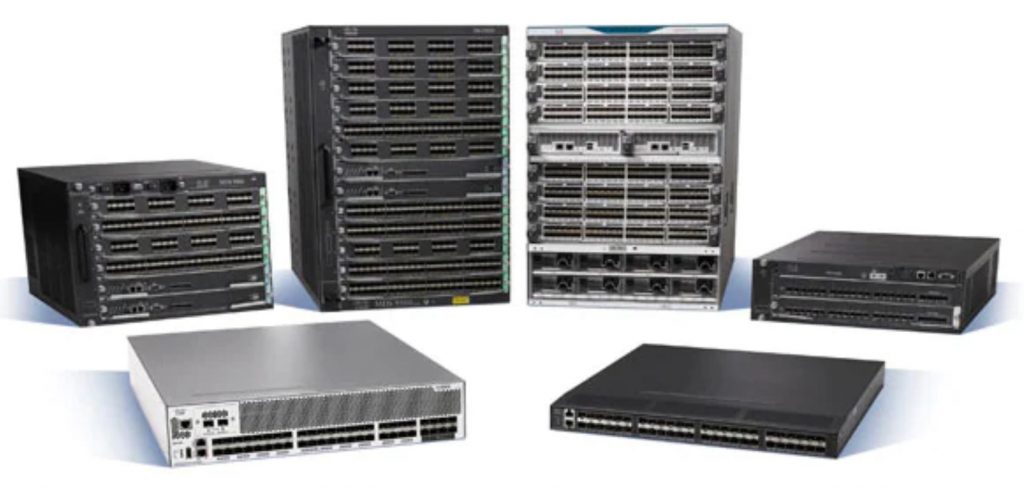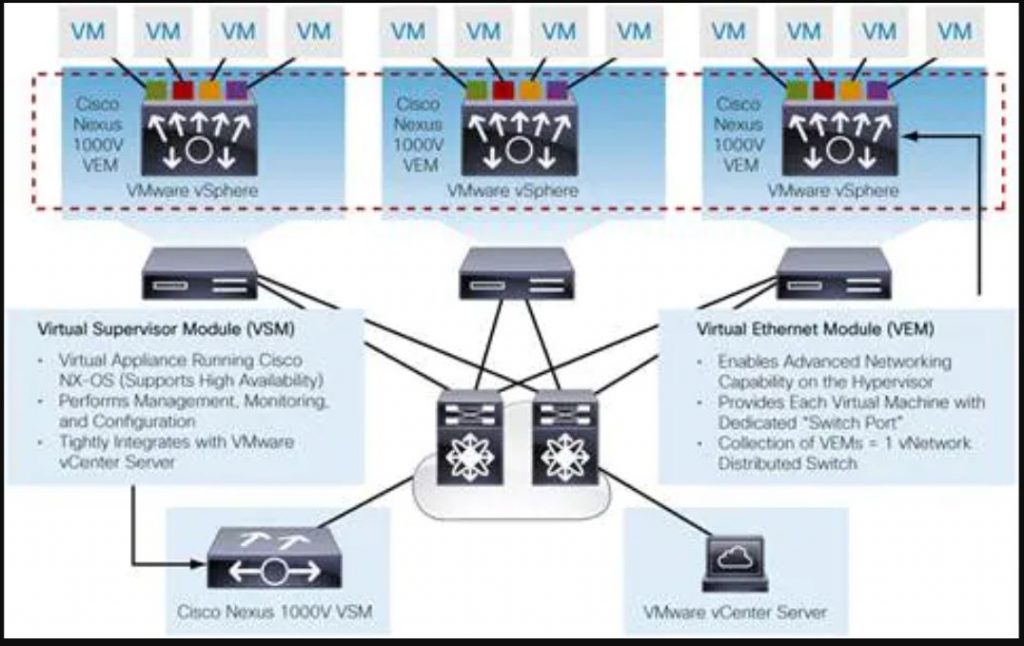لایسنس سیسکو CUCM
با اینکه تماس های صوتی تنها راه حل ارتباط با مشتریان و همکاران در بستر شبکه نمیباشد، کماکان بعنوان جزیی جدانشدنی از تجارت ها بحساب می آید و بسیار حیاتی است تا بستر مورد نیاز برای آن فراهم شود تا زمان و منابع سازمان مدیریت شود. سرویس مدیریت ارتباطات لایسنس سیسکو CUCM میتواند تمامی تماس های صوتی و تصویری را در بستر شبکه بهترین نحو مدیریت کند.
لایسنس سیسکو CUCM برای تمامی شبکه ها راه حل های مناسبی را در اختیار شما قرار می دهد. مرکز تلفن ارتباطات یکپارچه CUCM برای شبکه هایی با ابعاد کوچک، متوسط و بزرگ راه حل های مناسبی بحساب می آید و تا 80.000 کاربر را می تواند پشتیبانی کند. این سرویس جزو زیرساخت های Collaboration سیسکو و مبتنی بر IP میباشد. بوسیله CUCM شما میتوانید با همکاران و یا مشتریان خود بصورت صوتی و یا تصویری ارتباط برقرا کنید. درواقع کارکرد اصلی این سرویس برقراری تماس ها میباشد.
سیسکو CUCM ارتباطات را بوسیله موارد زیر بهبود میبخشد :
- برقراری تماس ها
- کنترل دستگاه ها و سیگنال ها
- مدیریت Dial Plan
- مدیریت تلفن ها
- قابلیت تهیه پشتیبان و بازگردانی تنظیمات
این سرویس با قابلیت هماهنگ شدن با سرویس Active Directory مایکروسافت، بکاربران امکان این را میدهد تا از تنظیمات موجود در شبکه برای تنظیمات تماس های خود استفاده کنند.
این سرویس قابلیت هماهنگ سازی با IP-Phone ها را دارا میباشد و از گستره وسیعی از محصولات با برندهای مختلف پشتیبانی میکند.
سیسکو UCM از جدیدترین پروتکل های احراز هویت ، رمزگذاری و ارتباطات پشتیبانی می کند، با گواهینامه های کلیدی صنعت مطابقت دارد.
ویژگی های لایسنس سیسکو CUCM
- کنسول وب برای مدیریت و نظارت بر بستر و مدیر ارتباطات یکپارچه سیسکو
- خط فرمان (CLI) برای استفاده مدیران
- ایجاد کنفرانس ها
- قابلیت استفادهه از API برای پشتیبانی Third-party Applications
- قابلیت توسعه تا 30,000 شماره بر روی یک کلاستر و تا 1,000,000 شماره بر روی یک سیستم یکپارچه
- قابلیت برقراری ارتباط با شبکه مخابرات (PSTN) از طریق خطوط آنالوگ (FXO) و خطوط E1-PRI با قابلیت DID (Direct Inward Dialing) ، با استفاده از روتر ها و Access Server های سیسکو و با ظرفیت دلخواه
- قابلیت یکپارچگی با Microsoft Exchange جهت پشتیبانی Fax Over IP که با استفاده از پروتکل 38
- امکان ارائه سرویس AAA برای تماس های کاربران با استفاده از Radius Server و فعال کردن پروتکل Radius بر روی Voice Gateway
- وجود امکان Redundancy در سیستم مرکزی مدیریت تماس ها
- امکان یکپارچگی VoIP با قابلیت های سوئیچ ها و روتر های سیسکو
- امکان آنالیز جزئیات کلیه تماس ها و ارائه گزارش های مختلف از جزئیات تماسها
پیاده سازی CUCM بر روی محیط مجازی
قابل پیاده سازی سیسکو UCM برروی محیط مجازی منجر به کاهش هزینه ها در تامین منابع گردیده با اینکه پیشنهاد شرکت سیسکو سرور های قدرتمند UCS می باشد .
لایسنس ها
هم اکنون برای این محصول فعالسازی لایسنس های اسمارت سیسکو فراهم میباشد. سیسکو قابلیت فعالسازی محصولات جدیدش را بوسیله انواع مختلف لایسنس ها از قبیل اسمارت لایسنس SLR و PLR مهیا کرده است.
Cisco Unified Communications Manager Overview
Characteristics of CUC Manager
Lets take a look at the full-blown Communications Manager, that’s the big guy. This is an application of the call managers what we call it, that’s running on server blades and we can cluster several servers together to support up to 30,000 IP phones. Then we can actually take these clusters and tie them together. So, pretty much we could just recreate the PSTN, the Public Switch Telephone Network if we needed to. It is using IBM Informix database – that’s going to be the platform that you’re using, because it’s going to be Linux. It also has a disaster recovery system of course for backing up and restoring all of this. We also have some tools that we can use to manage and monitor this environment.
Because we’re using Linux we’re really not going to be allowed to get to the root and start to do all kinds of coding. If you know Linux very well we’re kind of blocked from that and it’s almost to kind of to protect ourselves from messing up our phone system, but it is really nice. It’s running on the Linux platform, it’s got the Informix database that we’re using and we’re going to like. Get these tools, one of them is the Real-Time Monitoring Tool, RTMT tool that lets us manage this environment and we can see things like how many phones are registered and we can look at the processors and the memory utilization and they’re just a ton of information tied into that RTMT tool that we can use to really monitor the solution and even run some reports.
Hardware Requirements
Now with the Communications Manager Solution I mentioned that we’re using servers. We have rack-mount blades that we can purchase or we can again check Cisco’s website, we can use other vendor’s equipment, but you want to make sure that it is supported and tested by Cisco. So, double check that, but if you’re interested the Communications Manager Solution runs on MCS 7800 Series Servers and these servers are going to be purchased based on how many phones you want to support. Depending upon the phones that you’re supporting that’s going to determine which one of these server blades you’re going to choose and then of course you want probably more than one, so that you have some type of redundancy and backup plan.
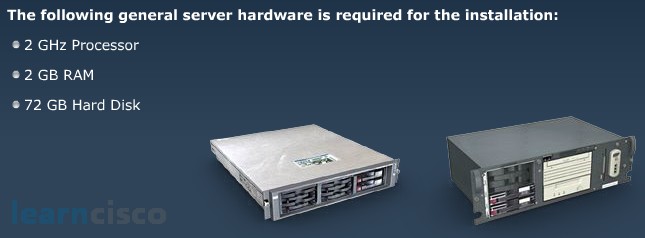
You do have those third party servers, but I just want to kind of throw this out there for you. You don’t want to take an old e-machine that was sitting in the closet and run your phone system on it, because I think the phone system is relatively important for most of our businesses to make sure that its running efficiently and smoothly, phone calls are understood, we don’t have downtime. That’s why we want to use something that Cisco has tested and said “Yep, works great on this” or we choose the Cisco platform to run it on, because we don’t want any problems and they do tell what the general processor and memory is, but just like I mentioned about routers, the day its printed things change, right? If you’re buying this brand new double check again Cisco’s website for the latest information on those servers.
Something that we’re really excited about is Virtual Machines and VMware is now supported with the following telecommunication solutions:
- Call Manager
- Unity Connect
- Presence
- Mobility
- Contact Center Solution
- Unity version 2
And there are some stipulations that you have to follow and it’s very important that you do, because if you’re not familiar with VMware when you install the VMware environment you can set how much memory that particular virtual machine has and what the CPU is and you have all kinds of things that you can fine tune. Cisco gives you what parameters you need to make sure that virtual machine is running so that the application performs well. So, you want to make sure you follow Cisco’s guidelines. Again, I can’t stress that enough because I see people make the mistake where they say “Well, I’m just going to give it a gig of RAM, because I only have maybe 200 phones that I’m supporting” and then things go wrong and we don’t want that to happen. We want to make sure that you give the environment enough memory, enough processing power to make sure that it runs smoothly.
There are some guidelines I want to make sure that you look at Cisco’s website when you’re doing this. You want to make sure that you have the virtual server setup right. You want to make sure that you have the proper licensing used for the virtual machines, because there are MAC addresses that are tied to your licenses, so you want to make sure that all that’s good to go. So, make sure that when you’re out purchasing this, maybe for the first time or your just looking at it, maybe you’re a new administrator and you’re checking things out. You should be able to use a show status command and that should allow you to look at your MAC addresses so that you know what your licenses are tied to. If you have an existing system you could do that to see what MAC addresses you’re using or if you’re just installing this brand new, you can use that show status command to find the MAC address, because when you go through this licensing process Ciscos going to want to know with the MAC address is, so they can tie the licenses to that particular environment.
High Availability
Something we’re all very worried about is making sure that our phone system, even our data network is up and running. So what do we do to make sure that that happens? Well, we make sure we put in some redundancy and we back things up all the time. With the Communications Manager Solution we’re going to be installing this on server blades, so we have up to 30,000 IP phones that could be configured on all these different servers. So, we want to make sure that we have enough servers to also have a backup plan in place.
We can have eight subscribers running this Cisco Call Manager Service. Now, what’s a subscriber? A subscriber is a server that has a read-only copy of the database for the most part. The publisher has a Read/Write copy of the database, so what happens is the publisher gets all the information and then pushes it back out to the subscribers, so the subscribers are up-to-date with the latest features, the number of phones and what those phones are doing out there. So, we have these subscribers they’re kind of the work horse behind the scenes, we typically don’t have phones registering with the publisher, we usually leave that to its own device because it’s busy doing other things.
There’s also a TFTP server. Now the TFTP server is what houses the configuration files for your devices, so that’s important. The phones need to be able to register first of all with your subscribers, but in that process they also need to get the TFTP information, so we need to have those TFTP servers available and they recommend up to two servers running that TFTP service. And your phones, when you go in to configure them, you’re able to tell them “alright, here’s your primary subscriber I want you to register with, but if that one’s not available here’s the secondary and here’s the tertiary in case maybe that primary one that they were choosing maybe was unavailable or down.” So there’s one way to have some redundancy two TFTP servers and there’s another way to have some redundancy and we also typically will say we could put a dedicated server, maybe for Music on Hold. I mean when you’re supporting 30,000 phones that could be a lot of people on hold all at once, so you might have a dedicated server for like Music on Hold. With the Communications Manager Solution we can tie a lot of different servers into the solution to do various things like be a Music on Hold Server, like be a TFTP Server. They are dedicated to just doing that.
There is also something called the Enunciator service that is what plays out the messages that maybe you’ve dialed the number incorrectly and even some of the tones that you hear on the phone, so we might have a dedicated Enunciator server that just plays out Enunciator messages. We want to make sure that we have enough servers out there that are going to support the number of phones that we have tied into our solution.
Database Replication and User-Facing Features
The Informix database is pretty intelligent, compared to the old Microsoft solution with SQL and if the publisher went down you couldn’t do anything, because that publisher again is the Read/Write copy of the database. With the Informix Solution it works a little bit differently. The publisher does own a Read/Write copy of that database that hasn’t changed. There’s one way replication that takes place from the publisher to the subscribers. The big difference here though is user-facing features; things like changing your call forwarding. That can now be done and stored locally on your subscriber, so if the publisher is down I can still change my call forwarding feature for example. Used to not be that way so this is a huge improvement and this really makes life much easier. So if that publisher’s down my users can still perform their features without an issue. Now if I wanted to add a phone it might cause the problem, but the users can continue to function until that publisher comes back online. Once that publisher is back the subscribers send all the information to the publisher and then the publisher pushes it back out to all the subscribers, so everybody’s up-to-date.
Intercluster Communication
ICCS or Intra-Cluster Communication Signaling takes place over TCP Port 8002 and 8004 and what’s taking place here is the publisher and the subscribers are keeping the database in sync. Remember the publisher has that Read/Write copy of the database and the subscribers primarily collect information, so what happens is when the device registers with the subscriber we have to tell the publisher about that, so now the publisher gets that information and sends it back out Call Detail Records, Call Management Records all collected by subscribers who ultimately tell the publisher about this information, so the publisher is up-to-date. So, if we had something like a billing application we would take that billing application and really run it against the publisher who had the full copy of that database of all the information, so that we could pull the records out.
CUCM Data Streams
If I pick up the handset of my IP phone and I want to make a phone call, first of all I have to communicate with the Communications Managers, so I have to use a special protocol, it’s either SIP or SCCP the Skinny Client Control Protocol. In this instance, this allows me to setup my call. If I’m streaming audio though between my IP phones I’m using RTP that’s a separate protocol. If I want to call out the PSTN I start off at RTP, but then when I hit that PSTN gateway it needs to convert that back to the Time-division multiplexing or analogue form, so I can head out to the public switched telephone network.
CUCM Key Features
The Communications Manager or Call Manager Application I like to call it, is really the solution that replaces your key system or PBX that separate solution. So we expected to perform call processing, setting up and tearing down of calls, but we also get some benefits because it’s IP telephony. We also have Computer Telephony Integration, which allows us to really create any type of applications we want and tie that together. So if I want to take maybe an application on my data network and tie that into an application I’ve created on my IP telephony solution, CTI support really allows us to do that. We also have a graphical user interface that allows us to manage all of this and some extra benefits that we get, if you see those really large liquid crystal display devices or IP phones that Cisco makes, you can actually pull up an application just like you would on your desktop machine and you can tie into all of the different databases and pull up information. There are tons of applications that are out there already and you can create your own using this XML-based format. There’s also the ability to leverage what you may already have on your PC. There’s something called the Cisco Web Dialer for example, this allows you from your PC to be able to click and select a phone number and have it dial that phone number, so again because we can tie between the data and the voice network, because we can tie it together we really have the sky as the limit in what type of applications we can tie into this. Or in short:
- Call processing
- Signalling and device control
- High scalability
- Configuration via GUI
- Directlry service that can be stand-alone or integrated with an existing directory
- CTI support
- Phone application support (XML)
What is Cisco Unified Communications Manager?

While voice calls are no longer the only option for communicating with coworkers, customers, and colleagues, it still remains a vital part of business operations.
It’s vital enough that you’ll likely dedicate time and resources to ensure it has quality performance.
If you opt for a Cisco collaboration package, such as BE6K or BE7K, Cisco Unified Communications Manager (Unified CM or CUCM) is the application that will handle voice and video calls.
This application provides reliable, secure, scalable, and manageable call control and session management.
As a Cisco partner, here at The KR Group, we’re asked about the applications included with BE6K or BE7K and often find ourselves explaining what Unified CM is.
There are four things you should know about Unified CM:
- What is Unified CM?
- How does Unified CM differ from BE6K or BE7K?
- How does CUCM integrate?
- What is CUCM’s integration with Active Directory?
Understanding these aspects of Unified CM will give you a better idea of what is included with a Cisco collaboration package.
What is Unified CM?
Unified CM is the core of Cisco’s collaboration infrastructure. It is an IP-based communications system that allows you to contact your coworkers or customers through audio or video regardless of physical location.
The primary function of CUCM is call processing and phone registration. Essentially, it is the brain of the phone; the physical handsets are just endpoints.
Unified CM is what processes your calls (both video and audio). It’s the application that provides services such as hold, transfer, conference, music on hold, and extension mobility.
How does Unified CM differ from BE6K or BE6K?

When you purchase a package of BE6K or BE7K, you’ll run the accompanying applications (including CUCM, CUCM IM and Presence Service, Unity Connection as well as optional Telepresence Server, Expressway, and Unified Contact Center) through VMWare on a medium- or high-density server. (Which server you’ll need will depend on how large your company is and how much you are using your call system.)
Unified CM is one of the applications of Cisco collaboration solutions, and it’s the one that enables your calling. It is what powers communication aspects, including:
- Call processing
- Signaling and control of devices
- Administration of the dial plan
- Administration of phone characteristics
- Directory services
- External application interface
- Backup and restore tools
BE6K and BE7K are packages of Cisco collaboration products, including CUCM.
Whether you opt for BE6K or BE7K, you’ll receive the same set of tools with CUCM. The only difference is with BE6K, the technology is only available for up to 1,000 users — the maximum number of licenses allowed with this option. Whereas, with BE7K can scale up to 30,000 users with multiple host servers.
How does CUCM integrate?
Ultimately, the Unified CM product suite is designed to optimize functionality and reduce the requirements for configuration and maintenance as well as increase interoperability.
When it comes to instant messaging, CUCM integrates with IM and Presence Service via Jabber.
If you still rely on IP and/or analog paging systems or faxing, CUCM integrates with them via software.
Other major communications technologies CUCM integrates with include:
- IP phones
- Customer contact center
- Video calls and conferencing
- Call reporting
- Applications from third parties
What is CUCM’s integration with Active Directory?
While there are many possibilities of integrations with Cisco Unified Call Manager, one we’re frequently asked about is between Cisco Unified Call Manager and Active Directory. This request is so common we’ve heard it from every business who’s purchased BE6K from us
Integrating CUCM and Active Directory allows your users’ profiles to synchronize across applications. Instead of requiring different user names and passwords to log into your computer, your email, and other collaboration applications, once this integration is completed, you can use the same user ID and password for all of them.
Another benefit of this integration is it connects users’ phones and voicemails to their email addresses and enables voicemails to be sent as email attachments.
Both of these benefits enhance the user experience of CUCM.
What does this mean?
If you’re considering BE6K, BE7K, or Call Manager Express, CUCM is what enables the strong audio and video processing application of the collaboration packages.
Unified CM is what enables you to use voice, video, or messaging to connect with coworkers or customers regardless of geographic location.
With CUCM, you can reliably connect via audio or video with your colleagues or customers.
As we stated, CUCM is only one component of the product suite accompanying Cisco’s collaboration packages, though.
For more information on Cisco’s BE6K package, you can check out our articles:
CUCM Overview
Cisco Unified Communications (UC) is an IP-based communications system integrating voice, video, data, and mobility products and applications. It enables more effective, secure communications and can transform the way in which we communicate. UC represents a communications paradigm shift like that of the invention of the telegraph. UC removes the geographic barriers of effective communications through the use of voice, video, and data integration. Business can be conducted with a fluidity that progresses and evolves with you. Information has been at our fingertips for a long time, but UC enables the sharing of this information to create knowledge and value.
Cisco UC is part of an integrated solution that includes network infrastructure, security, mobility, network management products, lifecycle services, flexible deployment and outsourced management options, end-user and partner financing packages, and third-party communication applications.
Cisco UC can drastically change the bottom line of business by creating more effective communications without losing the personal nature of a face-to-face conversation. More effective communication leads to reduced time to market and nimble transformation of business processes through collaboration.
Cisco UC Solution Components
The Cisco UC strategy encompasses voice, video, and data traffic within a single network infrastructure. Cisco UC equipment is capable of managing all three traffic types and interfacing with all standards-based network protocols.
Cisco IP Communications represents a new way of delivering UC functionality to enterprise customers. Instead of delivering a collection of disjointed products with individual release dates, testing methodology, and documentation, Cisco UC is a coordinated release of an integrated set of products that are tested, documented, and supported as a system.
Figure 1-1 illustrates the four standard layers of the Cisco UC voice infrastructure model and the components that make up the layers.
 Figure 1-1 Cisco Unified Communications Solution Components
Figure 1-1 Cisco Unified Communications Solution Components
The components of the standard layers are as follows:
- Infrastructure layer: The infrastructure consists of routers, switches, and voice gateways. The infrastructure layer carries data, voice, and video between all network devices and applications. This layer also provides high availability, management, quality of service (QoS), and network security.
- Call control layer: The call control layer provides for call processing, device control, and administration of the dial plan and features.
Call control can be provided by a CUCM, CUCM Express, or CUCM Business Edition (CMBE). This book focuses on the CUCM product, which is almost identical to the Cisco Unified CMBE. Call processing is physically independent from the infrastructure layer. For example, a CUCM, Cisco Unified CMBE, or CUCM Express in San Jose can process call control for a device physically located in Chicago.
- Applications layer: Applications are independent from call-control functions and the physical voice-processing infrastructure. Applications, including those listed here, are integrated through IP, which allows the applications to reside anywhere within the network:
- —Voice mail, integrated messaging, and unified messaging applications are provided through Cisco Unity, Cisco Unity Express, or Cisco Unity Connections products.
- —Contact centers of various sizes can be built with Cisco Unified Contact Center and Cisco Unified Contact Center Express.
- —Cisco Unified MeetingPlace and MeetingPlace Express are medium- to large-scale conferencing servers that support video integration. The MeetingPlace product integrates lecture-style conferences with scalable collaboration and control tools. Cisco Unified MeetingPlace Express is positioned to the small to medium-sized enterprises. MeetingPlace Express is the successor of the Cisco Conference Connection server.
- —Cisco Emergency Responder (ER) enhances the existing emergency functionality offered by CUCM. Cisco ER provides physical location updates for mobile devices to guarantee that emergency calls to the public safety answering point (PSAP) are properly routed to the PSAP in charge of emergency calls for that site. Cisco ER identifies the caller location and maps all calls from that physical location to an emergency line identification number (ELIN) through the use of standard automatic number identification (ANI)/caller identification (CLID). The ELIN is registered with the PSAP as an Emergency Response Location (ERL). Deploying this capability helps ensure more effective compliance with legal or regulatory obligations, thereby reducing the life and liability risks related to emergency calls.
- —The Cisco Unified Presence server collects information about the availability and communications capabilities of a user and provides this information to watchers of the user as a status indication. The status information includes the user’s communications device availability. For example, the user might be available via phone, video, web collaboration, or videoconferencing.
- —Standard protocol interfaces, including Telephony Application Programming Interface (TAPI), Java Telephony Application Programming Interface (JTAPI), Simple Object Access Protocol (SOAP), Q.SIG, H.323, Media Gateway Control Protocol (MGCP), and Session Initiation Protocol (SIP) are available to support third-party applications.
- Endpoints layer: The endpoints layer brings applications to the user, whether the end device is a Cisco IP Phone, a PC using a software-based phone, or a communications client or video terminal. Cisco UC provides multiprotocol support for Skinny Client Control Protocol (SCCP), H.323, MGCP, and SIP.
Cisco UC Network
The Cisco UC system delivers fully integrated communications, converging voice, video, and data over a single network infrastructure using standards-based protocols. The Cisco UC system delivers unparalleled performance and capabilities to address current and emerging communications needs in the enterprise environment, as illustrated by the network topology in Figure 1-2.
 Figure 1-2 Cisco UC Network
Figure 1-2 Cisco UC Network
The Cisco UC product suite is designed to optimize functionality, reduce configuration and maintenance requirements, and provide interoperability with a variety of other applications. It provides this capability while maintaining high availability, QoS, and security.
The Cisco UC system integrates the following major communications technologies:
- IP telephony: IP telephony refers to technology that transmits voice communications over a network using IP standards. Cisco UC includes a wide array of hardware and software products such as call-processing agents, IP phones, voice-messaging systems, video devices, conferencing, and many other applications.
- Customer contact center: Cisco Unified Contact Center products are a combination of strategy and architecture to revolutionize call center environments. Cisco Unified Contact Center promotes efficient and effective customer communications across large networks by enabling organizations to draw from a broader range of resources to service customers. These resources include access to a large pool of agents and multiple channels of communication and customer self-help tools.
- Video telephony: The Cisco Unified Video Advantage products enable real-time video communications and collaboration using the same IP network and call-processing agent as Cisco UC. Cisco Unified Video Advantage does not require special end-user training. Video calling with Cisco Unified Video Advantage is as easy as dialing a phone number.
- Rich-media conferencing: Cisco Unified MeetingPlace creates a virtual meeting environment with an integrated set of IP-based tools for voice, video, and web conferencing.
- Third-party applications: Cisco works with leading-edge companies to provide the broadest selection of innovative third-party IP communications applications and products focused on critical business needs such as messaging, customer care, and workforce optimization.
CUCM Functions
CUCM extends enterprise telephony features and functions to packet telephony network devices. These packet telephony network devices include Cisco IP Phones, media-processing devices, VoIP gateways, and multimedia applications. Additional data, voice, and video services, such as converged messaging, multimedia conferencing, collaborative contact centers, and interactive multimedia response systems, interact with the IP telephony solution through the CUCM application programming interface (API).
CUCM provides these functions:
- Call processing: Call processing refers to the complete process of originating, routing, and terminating calls, including any billing and statistical collection processes.
- Signaling and device control: CUCM sets up all the signaling connections between call endpoints and directs devices such as phones, gateways, and conference bridges to establish and tear down streaming connections. Signaling is also referred to as call control and call setup/call teardown.
- Dial plan administration: The dial plan is a set of configurable lists that CUCM uses to perform call routing. CUCM is responsible for digit analysis of all calls. CUCM enables users to create scalable dial plans.
- Phone feature administration: CUCM extends services such as hold, transfer, forward, conference, speed dial, redial, call park, and many other features to IP phones and gateways.
- Directory services: CUCM uses its own database to store user information. User authentication is performed locally or against an external directory. Directory synchronization allows for centralized user management. Directory synchronization allows CUCM to leverage users already configured in a corporate-wide directory. Microsoft Active Directory (2000 and 2003), Netscape 4.x, iPlanet 5.1, and Sun ONE 5.2 directory integrations are supported. The local CUCM database is a Lightweight Directory Access Protocol (LDAP)-compliant database (LDAPv3) component in the IBM Informix Database Server (IDS).
- Programming interface to external applications: CUCM provides a programming interface to external applications such as Cisco IP SoftPhone, Cisco IP Communicator, Cisco Unified IP Interactive Voice Response (IP IVR), Cisco Personal Assistant, Cisco Unified Personal Communicator, and CUCM Attendant Console.
- Backup and restore tools: CUCM provides a Disaster Recovery System (DRS) to back up and restore the CUCM configuration database. The DRS system also backs up call details records (CDR), call management records (CMR), and the CDR Analysis and Reporting (CAR) database.
Figure 1-3 shows IP phones that logically register with one of the CUCMs in the cluster. Multiple CUCM servers share one database, and the phone maintains an active connection to both the primary and backup CUCM server. The figure shows the phone’s logical TCP/IP connections to the primary server.
 Figure 1-3 CUCM Functions
Figure 1-3 CUCM Functions
CUCM Signaling and Media Paths
CUCM uses SIP or SCCP to communicate with Cisco IP Phones for call setup and teardown and for supplementary service tasks.
After a call has been set up, media exchange occurs directly between the Cisco IP Phones across the IP network, using the Real-Time Transport Protocol (RTP) to carry the audio. CUCM is not involved in a call after the call has been set up. If the CUCM server were unplugged during the duration of the call, users would not notice unless they attempted to use a feature on the phone. CUCM is involved only in call setup, teardown, and features. If the CUCM server that set up the call were down during a conversation, end users would see a message indicating “CM Down, Features Disabled” on the LCD screen of the IP phone.
Example: Basic IP Telephony Call
Figure 1-4 illustrates a user at phone A placing a call to phone B.
 Figure 1-4 CUCM Signaling and Media Paths
Figure 1-4 CUCM Signaling and Media Paths
At the beginning of a call, a user at IP phone A picks up the handset, and a message is sent to CUCM letting CUCM know that the device has gone off-hook. CUCM responds to this stimulus by replying with a message that tells the device to play the dial tone file that is stored in the flash memory of the phone. The user at phone A hears the dial tone and begins dialing the phone number of phone B. SCCP phones send their digits to CUCM as they are pressed (digit by digit), whereas SIP phones send their dialed digits in one message (enbloc signaling) by default. SIP phones have options that allow them to behave similarly to SCCP phones (Keypad Markup Language [KPML] and dial rules). CUCM performs digit analysis against the dialed digits. If a match is found, CUCM routes the call per its configuration. If CUCM does not find a match, a reorder tone is sent to the calling party.
CUCM signals the calling party to initiate ringback, so the user at phone A will hear the ringback tone. CUCM also signals the call to the destination phone, which plays the ringdown tone. Additional information is provided to the phones to indicate the calling and called party name and number. (Phone A will show the destination device name and number, and phone B will show the calling party name and number.)
When the user at phone B accepts the call, CUCM sends a message to the devices letting them know the IPv4 socket (IPv4 address and port number) information in which they should communicate for the duration of the call. The RTP media path opens directly between the two phones.
The Cisco IP Phones require no further communication with CUCM until either phone invokes a feature, such as call transfer, call conferencing, or call termination.
CUCM Hardware, Software, and Clustering
CUCM Release 6.0 is a complete hardware and software solution that works as a network appliance. A network appliance is a closed system that supports only Cisco-authorized applications and utilities. Goals of the appliance model are to simplify the installation and upgrade of the system and to hide the underlying operating system. An appliance-based model makes it possible for an administrator to install, implement, and manage a CUCM server without requiring knowledge of or having access to the underlying operating system.
The CUCM appliance has these features:
- Complete hardware and software solution.
CUCM servers are preinstalled with all software that is required to operate, maintain, secure, and manage a server or cluster of servers (including Cisco Security Agent).
CUCM is also provided as a software-only product, which may be installed on supported Cisco Media Convergence Servers (MCS) or Cisco-approved third-party server platforms.
- Appliance operating system provides ease of installation and upgrade, while also providing security and reliability.
- You can upgrade CUCM servers while they continue to process calls.
- System administration is performed via graphical user interface (GUI), command-line interface (CLI), and through documented APIs for third-party access.
- Outputs a variety of management parameters via a published interface to provide information to approved management applications, such as NetIQ Vivinet Manager, HP OpenView, and Integrated Research PROGNOSIS.
- Appliance operates with or without keyboard, mouse, and monitor (also known as headed or headless). Third-party access is allowed via documented APIs only.
- CUCM supports clustering of servers for the purpose of redundancy and load sharing. Database redundancy is provided by sharing a common database across multiple servers. Call-processing redundancy is achieved through the Call Manager Group setting, in which multiple servers are assigned to a device for the purposes of providing fault tolerance.
A CUCM cluster can have up to 20 servers in it. Only one publisher server is allowed in the cluster. The publisher houses the read/write copy of the database. Up to eight subscriber servers can be in the cluster, with the restriction that only four of the subscriber servers can perform active call processing. If more than four subscriber servers are used in a cluster, the additional servers are dedicated standby servers in case the active subscriber server is not available. The other 11 servers in the cluster can be responsible for various services, including TFTP and media resources (conferencing, music on hold, transcoding).
CUCM Cluster
Clustering allows the network to scale to several thousands of endpoints, provides redundancy in case of network or server failure, and provides a central point of administration. Figure 1-5 displays a Publisher database synchronizing database components to all the other servers in the cluster. The servers running the CCM.exe process are performing call processing, and the other servers are taking on special roles described in later chapters of this book. CUCM clustering creates scalability by segregating processes to other machines, which increases performance.
 Figure 1-5 CUCM Cluster
Figure 1-5 CUCM Cluster
Device settings are stored in the IBM IDS database. The database is the repository for service parameters, features, device configurations, and dial plan configurations.
The database replicates nearly all configuration information in a hub-and-spoke topology (one publisher, many subscribers). CUCM nodes also use a second communication method to replicate runtime data using a mesh topology. (Every node updates every other node.) A mesh topology of information sharing provides dynamic registration and active call information that changes much more frequently than database changes. Real-time mesh replication is used to communicate newly registered phones, gateways, and digital signal processor (DSP) resources, guaranteeing optimum call routing.
Cisco 7800 Series Media Convergence Servers
Although it is possible for CUCM to run on most computers, Cisco supports CUCM running only on Cisco-approved hardware that they will support. The minimum hardware requirements for CUCM Release 6.0 are as follows:
- 2-GHz processor
- 2 GB RAM
- 72-GB hard disk
Minimum requirements for CUCM 6 are the same as for Cisco Unified CallManager Version 5, but only specific MCS models are approved.
The 7800 series servers are available in the –H or –I variants. –H stands for Hewlett-Packard, and –I stands for IBM server platforms. The 7825 server is a 19-inch or 23-inch rack-mountable server that provides a single SATA hard drive and one power supply. The 7835 server improves reliability and performance by including hot-swappable SCSI hard drives, hardware RAID 1 disc duplexing, and redundant power supplies. The 7845 improves reliability and performance by providing a second CPU and a backup fan assembly.
You can find the most detailed, current Cisco hardware specifications at http://www.cisco.com/en/US/products/hw/voiceapp/ps378/prod_brochure0900aecd8062a4f9.html.
CUCM must be installed on a server that meets Cisco configuration standards. Cisco actively collaborates with two server hardware manufacturers to meet this requirement: Hewlett-Packard (HP) and IBM. You can find additional information at the following sites:
- Cisco-approved IBM server solutions: http://www.cisco.com/en/US/products/hw/voiceapp/ps378/prod_brochure0900aecd80091615.html
- Cisco-approved HP server solutions: http://www.cisco.com/en/US/products/hw/voiceapp/ps378/prod_brochure09186a0080107d79.html
Cisco UC Operating System
The CUCM operating system is based on Red Hat Linux. Operating system and application updates are provided by Cisco through patches that are digitally signed by Cisco. Unsupported software and applications (not digitally signed by Cisco) cannot be uploaded or installed into the system.
Root access to the file system is not permitted. The operating system has been hardened by disabling all unnecessary accounts and services. There is also no access to native operating system debug interfaces. Traces, alarms, and performance counters can be enabled and monitored through the CUCM GUI. Some files and directories are accessible through the Cisco CLI and GUI for maintenance purposes.
Remote-access support allows Cisco Technical Assistance Center (TAC) engineers to remotely access the CUCM server for a restricted time interval. Remote-access support can be enabled in CUCM serviceability tools.
The IBM IDS is the database for the Cisco UC applications. The IDS database installation and configuration is scripted into the CUCM installation DVDs. No UNIX or IBM IDS database knowledge is required to configure and operate CUCM.
Cisco Secure Agent is included with the appliance to provide protection against known and unknown attacks. Cisco Secure Agent is a host-based intrusion prevention system (HIPS).
A DHCP server is integrated into CUCM to provide IP telephony devices with their IP addressing requirements.
The Cisco UC operating system is also used for these Cisco UC applications:
- Cisco Emergency Responder 2.0
- Unity Connection 2.0
- Cisco Unified Presence 6.0
Cisco UC Database
The data in the CUCM database is divided into two types, as described in the sections that follow.
Static Configuration Data
Static configuration data is created as part of the configuration of the CUCM cluster. Read/write access to this data is provided for the publisher only. Subscribers provide only read-only access to this data. If the publisher becomes unavailable, the subscriber data can be used to process calls, but it cannot be modified. Database replication is unidirectional, from the publisher to the subscribers. Only CDRs and CMRs are replicated from the subscriber servers to the publisher. All other configuration information is downloaded from the publisher.
User-Facing Features
You have learned that the publisher is the only server with a read-write copy of the database, and all configuration changes should be made on the publisher. These changes are then replicated downstream to the subscribers. This model represents a single point of failure from the perspective of moves, adds, and changes (MAC). The problem is further exacerbated because the publisher was the only server in the cluster responsible for call-forwarding changes, extension mobility logins, and message-waiting indicators before CUCM 6.0.
CUCM 6.0 treats a portion of the database as dynamic configuration data. Read/write access to dynamic configuration data is provided on all servers, allowing certain information to be modified if the publisher server is unavailable. The dynamic information that can be changed during a publisher outage is known as user-facing features (UFF). UFF data is replicated from the subscriber servers where the change was initiated to all other subscriber servers in the CUCM cluster.
Examples of UFFs include the following:
- Call Forward All (CFA)
- Message Waiting Indication (MWI)
- Privacy, Enable/Disable
- Do Not Disturb, Enable/Disable (DND)
- Extension Mobility Login (EM)
- Hunt Group Login Status
- Monitor (future use)
- Device Mobility
- CTI CAPF Status (Computer Telephony Integration, Certificate Authority Proxy Function)
The services listed in Table 1-1 rely on the availability of the publisher server regardless of the version of CUCM used.
Table 1-1. Publisher Server Required Services
| Component | Function |
| CCMAdmin | Provisions everything |
|
CCMUser |
Provisions user settings |
| BAT | Provisions everything initiated by the Bulk Administration tool |
| TAPS | Provisions everything initiated by the Tool for Auto-Registered Phone Support |
| AXL | Provisions everything initiated by the AVVID XML Layer service |
| AXIS-SOAP | Enables and disables services through SOAP |
| CCM | Inserts phones (auto-registration only) |
| LDAP Sync | Updates end-user information |
| License Audit | Updates license tables |
Database Access Control
Database access is secured using the embedded Red Hat, iptables dynamic firewall and a database security password.
The procedure to allow new subscribers to access the database on the publisher is as follows:
- Step 1 Add the subscriber to the publisher database using CUCM Administration.
- Step 2 During installation of the subscriber, enter the same database security password that was entered during installation of the publisher.
After this configuration, the following process occurs to replicate the database from the publisher to the newly added subscriber:
- The subscriber attempts to establish a connection to the publisher database using the database management channel.
- The publisher verifies the subscriber’s authenticity and adds the subscriber’s IP address to its dynamic firewall (iptables).
- The subscriber is allowed to access the publisher database.
- The database content is replicated from the publisher to the subscriber.
Figure 1-6 illustrates the iptables firewall allowing subscriber access to the publisher database.
 Figure 1-6 Database Access Control
Figure 1-6 Database Access Control
You can find CUCM 6.0 TCP and UDP port usage information at http://www.cisco.com/en/US/docs/voice_ip_comm/cucm/port/6_0/60plrev1.pdf.
CUCM Licensing
Licensing is implemented in CUCM beginning with Release 5.0. Administration of license management is done through CUCM GUI administration, allowing accurate tracking of active device registrations compared to the license units that have been purchased. License enforcement occurs at the time of phone provisioning and CUCM service activation.
The publisher is the only licensing server. The licensing server is the logical component that keeps track of the licenses purchased and the licenses used. If the publisher fails, no new phones can register, and no configuration changes will be allowed. Existing phones will continue to operate during a publisher outage.
CUCM tracks the license compliance for devices, applications, and software as follows:
- Device units licenses: The maximum number of provisioned devices in the CUCM database will be tracked and enforced. Route points and CTI ports are not enforced.
- Application licenses: Application licenses are required for every call-processing server running the CallManager service. Application licenses are tied to the MAC address of the network interface card (NIC) of the server.
- Software licenses: Software licenses are tied to the major version of the software. Software licenses are required for upgrade to CUCM 6.
Licenses are created and distributed in accordance with the Cisco FlexLM process. Cisco product license registration is performed at http://www.cisco.com/go/license.
These two types of product IDs are available:
- Cisco device license units: Cisco device license units (DLU) are for Cisco devices only.
- Third-party device license units: Third-party DLUs can be converted to Cisco units, but not vice versa.
CUCM tracks the number of units required by each device, as shown in Figure 1-7. Each device type corresponds to a fixed number of units.
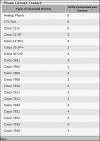 Figure 1-7 Device License Units
Figure 1-7 Device License Units
The number of DLUs consumed per device depends on the device type and capabilities of the phone.
The number of units required per device can be viewed from CUCM Administration. DLUs are perpetual and device independent. Figure 1-7 displays the number of DLUs consumed in CUCM 6.0 by some popular phones.
The main components of the license file are as follows:
- MAC address of the license server (publisher)
- Version (major release) of the CUCM software
- Number of node licenses (number of CUCM servers in cluster)
- Number of DLUs
License files are additive. (Multiple license files can be loaded.) The Cisco FlexLM process is used to obtain licenses, and integrity of license files is assured by a digital signature.
When upgrading from Cisco Unified CallManager 4.x, the number of DLUs required is calculated during the CUCM migration process, and an intermediate XML file containing these license counts is generated. The number of devices and servers that are in the database at the time of migration is the basis for the number of DLUs and node licenses in the interim license file. No additional phones may be added until the interim license file has been replaced by a real license file.
After upgrading to CUCM 6.0(1), use the View File option in the License File Upload window to view the intermediate XML file. Copy and paste the intermediate license file into the CUCM License Upgrade window on Cisco.com to obtain the actual license file. Upload the actual license file to the publisher (license server).
Existing device and node licenses from CUCM 5.x can be used in CUCM 6.x.
Example 1-1 shows an example license file.
Example 1-1. Example License File
INCREMENT PHONE_UNIT cisco 6.0 permanent uncounted VENDOR_STRING=<Count>1000</Count><OrigMacId>000BCD4EE59D</OrigMacId> <LicFileVersion>1.0</L icFileVersion> HOSTID=000bcd4ee59d NOTICE="<LicFileID>20050826140539162</LicFileID><LicLineID>2 </LicLineID> <PAK></PAK>" SIGN="112D 17E4 A755 5EDC F616 0F2B B820 AA9C 0313 A36F B317 F359 1E08 5E15 E524 1915 66EA BC9F A82B CBC8 4CAF 2930 017F D594 3E44 EBA3 04CD 01BF 38BA BF1B"
Significant fields are highlighted and described as follows:
- INCREMENT PHONE_UNIT Cisco 6.0 indicates a phone unit license file for Cisco Unified CM 6.0. There is no expiration date for this license, as indicated by the keyword permanent.
- This license file includes 1000 license units.
- The MAC address of the license server is 000BCD4EE59D.
License File Request Process
Figure 1-8 displays the license file request process, which includes these steps:
- The customer places an order for CUCM.
- The manufacturing database scans the Product Authorization Key (PAK) and records it against the sales order.
- The product (CD or paper claim certificate) is physically delivered to the customer.
- The customer registers the product at http://www.cisco.com/go/license or a public web page and provides the MAC address of the publisher device that will become the license server.
- The license fulfillment infrastructure validates the PAK, and the license key generator creates a license file.
- The license file is delivered via e-mail to the customer. The e-mail also contains instructions on how to install the license file.
- The customer installs the license file on the license server (publisher).
 Figure 1-8 License File Request Process
Figure 1-8 License File Request Process
Obtaining Additional Licenses
The process of obtaining additional DLUs and node licenses is as follows:
- The customer places an order for the additional licenses for a license server (publisher MAC address has to be specified).
- When the order is received, Cisco.com generates a license file with the additional count and sends it to the customer.
- The new license file has to be uploaded to the license server and will be cumulative.
Consider this example. A CUCM server has an existing license file that contains 100 DLUs. Another 100 DLUs are purchased. The second license file that is generated will contain only 100 DLUs. When the new license file with 100 DLUs is uploaded to CUCM, the 100 DLUs from the first license file are added to the devices of the second license file, resulting in a total of 200 DLUs.
Licensing Components
The key licensing components of CUCM licensing are the license server and the license manager.
License Server
The license server service runs on the publisher in the CUCM cluster and is responsible for keeping track of the licenses purchased and consumed. The MAC address of the publisher is required to generate a license file.
License Manager
The license manager acts as a broker between CUCM applications that use licensing information and the license server. The license manager receives requests from the CUCM applications and forwards the requests to the license server. The license manager then responds back to the application after the request has been processed by the license server. The license manager acts a licensing proxy server.
An administration subsystem and alarm subsystem complete the functional diagram. Details of these two subsystems are as follows:
- The administration subsystem provides the following capabilities:
- —Keeps information about the license units required for each phone type. The customer can view this information using a GUI.
- —Supports a GUI tool that calculates the required number of phone unit licenses. The customer inputs phone types and the number of phones of each type that the customer wants to purchase. The output is the total number of licenses that the customer needs for the given configuration.
- —Supports a GUI tool that displays the total license capacity and the number of licenses in use and license file details. The tool can also report the number of available licenses.
- The alarm subsystem generates alarms that are routed to event logs or sent to a management station as Simple Network Management Protocol (SNMP) traps to notify the administrator of the following conditions:
- —Overdraft: Occurs when an overdraft condition exists. An overdraft condition occurs when more licenses are used than available but the amount of exceeding licenses is in an acceptable range. (5 percent overdraft is permitted.)
- —License server down: Occurs when the License Manager cannot reach the license server.
- —Insufficient licenses: Occurs when the license server detects the fact that there are not sufficient licenses to fulfill the request and raises an alarm to notify the administrator.
Issues with the license file occur when there is a version mismatch between the license file and the CUCM (license file version mismatch alarm), or when the number of licenses in the license file is less than the number of phones provisioned (license file insufficient licenses alarm). Another cause of this condition is an invalid MAC address (for instance, after a NIC change).
Figure 1-9 is a functional diagram stepping through the process of a license request, as described in the list that follows:
- A request for a certain number of DLUs is made by the admin subsystem because of an event (for example, phone registration).
- The License Manager service on a CUCM subscriber forwards the request to the publisher server running the License Server service.
- The License Server service receives the license request event and allocates the required number of DLUs required based on the type of device. If not enough license units are available to accommodate the request, a deny message is sent back to the license manager on the subscriber server. If resources are available, the license server grants the request and sends a grant message to the license manager on the subscriber server.
- The License Manager service on the subscriber server receives the license grant or deny message and allows the phone to register.
- If the license request was denied, the subscriber server generates an alarm in the alarm subsystem. The deny message will be available in the CUCM syslog server by default.
 Figure 1-9 Licensing Functional Diagram
Figure 1-9 Licensing Functional Diagram
Calculating License Units
To calculate the number of phone licenses required, follow these steps:
- Step 1 Choose System > License > License Unit Calculator. The License Unit Calculator window displays. The number of license units consumed per device and the current number of devices display as shown in Figure 1-10.
 Figure 1-10 License Unit Calculator
Figure 1-10 License Unit Calculator
- Step 2 In the Number of Devices column, enter the desired number of devices, corresponding to each node or phone.
- Step 3 Click Calculate. The total number of CUCM node license units and DLUs required for specified configuration will display.
License Unit Reporting
License unit reports can be run to verify the number of licenses consumed and available for future expansion. Use the following procedure to generate a license unit report:
- Step 1 Choose System > License > License Unit Report.
- Step 2 The License Unit Report window displays as shown in Figure 1-11. This window displays the number of phone licenses and number of node licenses, in these categories:
- Units Authorized
- Units Used
- Units Remaining
 Figure 1-11 License Unit Report
Figure 1-11 License Unit Report
License files (CCMxxxxx.lic) are uploaded to the publisher (license server). To upload a license file to the publisher server, follow these steps:
- Step 1 Ensure that the license file is downloaded to a local PC.
- Step 2 From the PC and using a supported browser, log in to CUCM Administration.
- Step 3 Choose System > License > License File Upload, as shown in Figure 1-12. The License File Upload window displays.
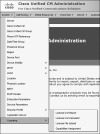 Figure 1-12 License File Upload Procedure
Figure 1-12 License File Upload Procedure
- Step 4 In the window shown in Figure 1-13, click Upload License File.
 Figure 1-13 License File Upload Procedure
Figure 1-13 License File Upload Procedure
- Step 5 Click Browse to choose the license file from the local directory.
- Step 6 Click Upload.
- Step 7 After the upload process has completed, click the Continue prompt when it appears. The content of the newly uploaded license file will display.

